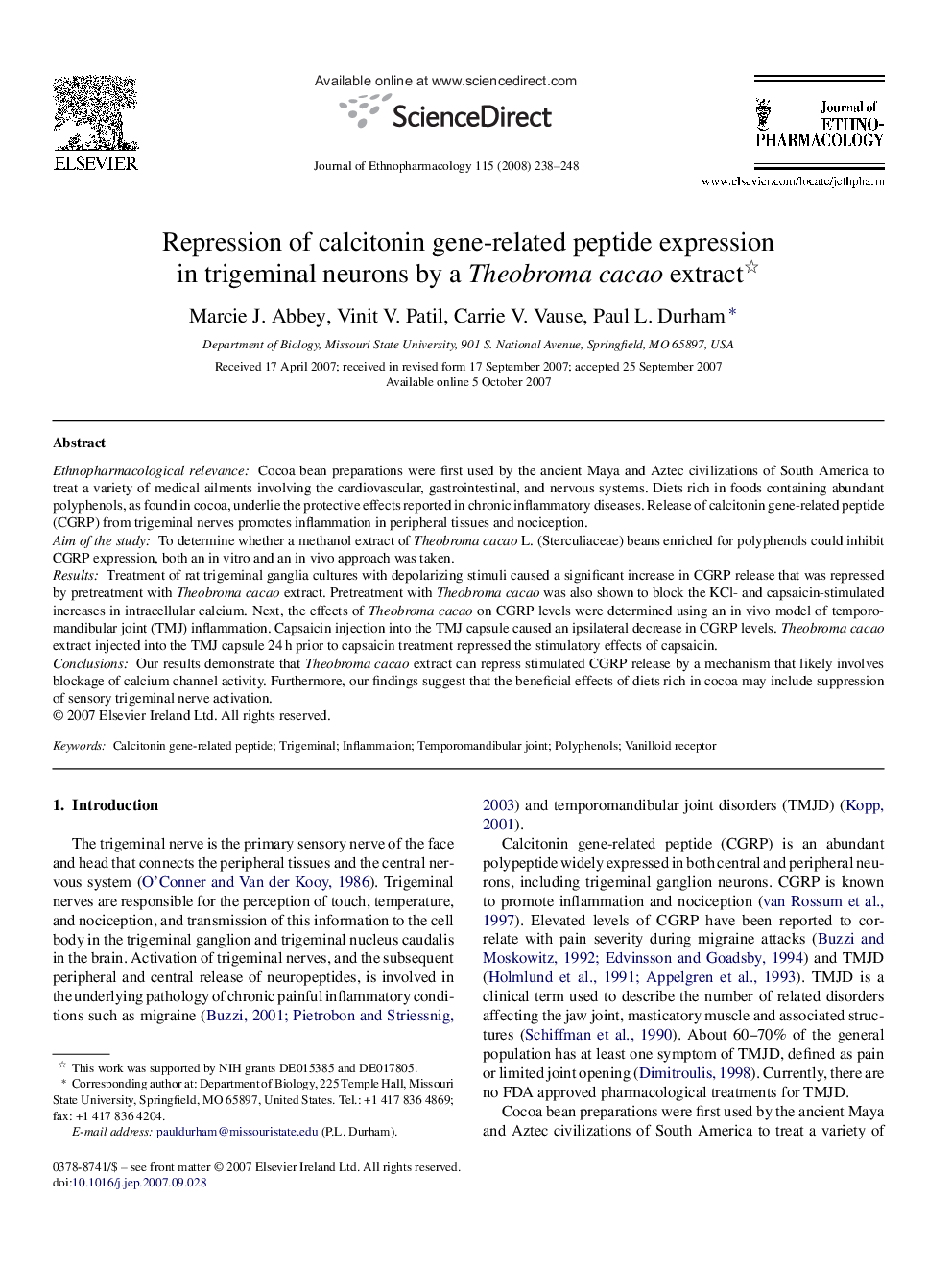| Article ID | Journal | Published Year | Pages | File Type |
|---|---|---|---|---|
| 2547465 | Journal of Ethnopharmacology | 2008 | 11 Pages |
Ethnopharmacological relevanceCocoa bean preparations were first used by the ancient Maya and Aztec civilizations of South America to treat a variety of medical ailments involving the cardiovascular, gastrointestinal, and nervous systems. Diets rich in foods containing abundant polyphenols, as found in cocoa, underlie the protective effects reported in chronic inflammatory diseases. Release of calcitonin gene-related peptide (CGRP) from trigeminal nerves promotes inflammation in peripheral tissues and nociception.Aim of the studyTo determine whether a methanol extract of Theobroma cacao L. (Sterculiaceae) beans enriched for polyphenols could inhibit CGRP expression, both an in vitro and an in vivo approach was taken.ResultsTreatment of rat trigeminal ganglia cultures with depolarizing stimuli caused a significant increase in CGRP release that was repressed by pretreatment with Theobroma cacao extract. Pretreatment with Theobroma cacao was also shown to block the KCl- and capsaicin-stimulated increases in intracellular calcium. Next, the effects of Theobroma cacao on CGRP levels were determined using an in vivo model of temporomandibular joint (TMJ) inflammation. Capsaicin injection into the TMJ capsule caused an ipsilateral decrease in CGRP levels. Theobroma cacao extract injected into the TMJ capsule 24 h prior to capsaicin treatment repressed the stimulatory effects of capsaicin.ConclusionsOur results demonstrate that Theobroma cacao extract can repress stimulated CGRP release by a mechanism that likely involves blockage of calcium channel activity. Furthermore, our findings suggest that the beneficial effects of diets rich in cocoa may include suppression of sensory trigeminal nerve activation.
